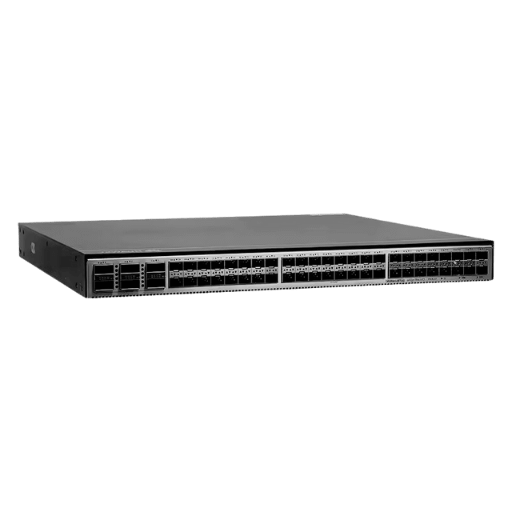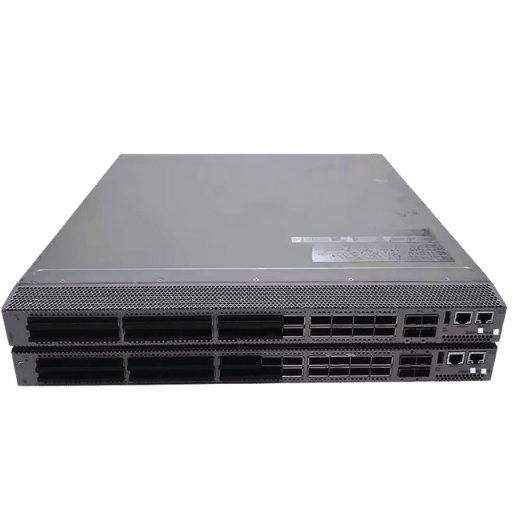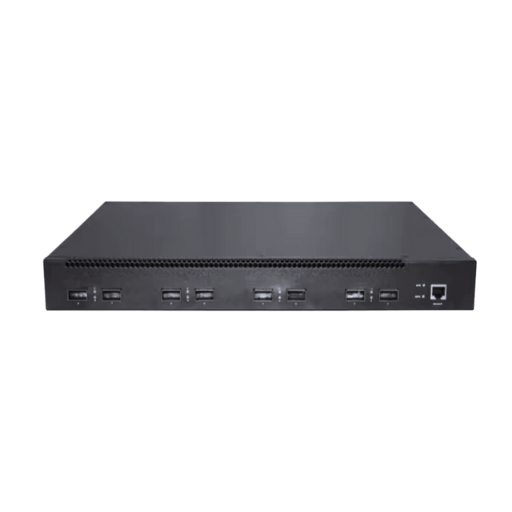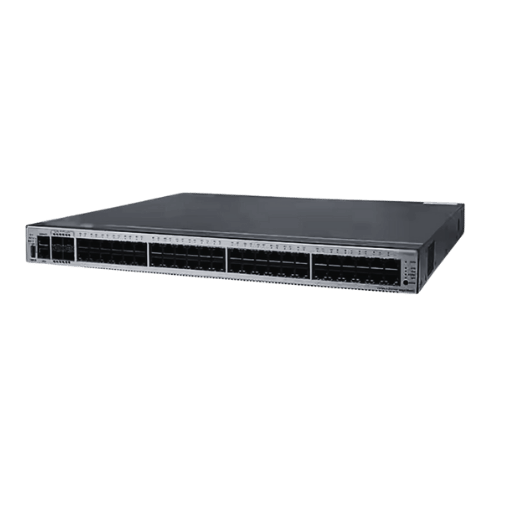The appetite for network infrastructure is growing exponentially in today’s digital era. People and organizations always look for a greater amount of bandwidth and data transfer at speed, hence the demand for efficient, reliable, and cheaper networking solutions. The emphasis of this article is on 2.5GbE switches, particularly on fanless and low-cost models. In the subsequent sections, we will examine the functional and technical features of these devices, present numerous models currently on the market, and evaluate their operational characteristics and areas of application in networking. This guide is designed so that the reader can choose a 2.5GbE switch suite for his or her networking needs.

The 2.5G switch is a networking tool for data transferring at a speed of approximately 2.5 Gigabits per second. The 2.5G switch achieves this extended throughput by employing Ethernet cables that facilitate enhanced data transmission without major infrastructure overhauls. A 2.5G switch facilitates data traffic among the devices to reduce latency via data routing between the existing networked computers, servers, and other devices. This is a suitable enhancement for the networks working towards improving their performance while trying to maintain budgets. It is very good for applications such as streaming, video gaming, or businesses needing constant interaction directed to high speeds.
In a 2.5G network switch, ports can be defined as the parts that provide a physical attachment point for cables to connect the network. The switches also work with computers, servers, and other switches, allowing ports to be defined as substations for data. Usually, as the case is with other network switches, a 2.5G switch supports up to several ports, each of which can transmit data up to 2.5 Gb/s. This guarantees that the switch will have good data transmission and a good connection, which is important for applications with more space. On the other hand, the number of ports available on the switch may also determine how many devices can be connected to the switch. In such cases, it also determines how big the network can grow without losing its performance capabilities. More so, the ports of a 2.5G switch can be said to be executive parts regarding enhancing the network speed and dependability. The ports are crucial in improving computing environments that typically require immense data exchange and good network throughput.
Understanding the difference between managed and unmanaged switches and their usage specifications is key in deploying and managing a network. In most households or small offices, using unmanaged switches is ideal as it offers basic plugins to connect devices. These switches are completely plugged and used without configuring, meaning they’re simple and inexpensive to operate. Still, they don’t provide comprehensive performance controls or traffic management over the network.
On the other hand, Managed Ethernet switches are more complicated as they come with onboard traffic control mechanisms such as VLANs, SNMP, QoS, and a wide variety of security options. They are best suited for large and complicated networks that require regulated control and thorough supervision of data usage. Managed switches allow the network administrator to enhance performance, solve problems, and ensure the network is secure. Therefore, considering their uses, it goes without saying that unmanaged switches would fit in simple configurations. In contrast, managed ones would be the best choice for constraints such as data handling, network efficiency, and security.

A fanless metal construction in the switches contributes to improved performance and reliability as a few benefits can be gained. To start off, removing fans from the equipment minimizes the level of noise at the workplace and data centers, making them a quieter place to work. Moreover, decreasing the number of moving components, as in the case of a fanless switch, improves reliability. It extends the operating life of the switch because it lessens the risks of mechanical breakdowns. Furthermore, networks of switches tend to overheat, but since the metal enclosure provides excellent heat transfer, the switch will reach optimal working temperatures without mounting any cooling devices. In conclusion, a fanless design offers a durable and simple solution that enhances the performance of networks and promotes greener resource utilization.
Due to the absence of moving parts, fanless switches offer a high level of cooling efficiency without any noise. This makes them desirable in environments with strict noise restrictions, like offices and small business settings. The absence of fans also lowers the chances of mechanical breakdown, enhancing the switch’s reliability. When it comes to switching, the heat sinks can easily dissipate the switch’s heat, and in addition, the metal body allows for an efficient distribution of heat. This body construction minimizes the chances of the switch failing under heat-stress conditions. Because of this feature, the switches can perform and function normally even when heavily stressed regarding tasks. For others, the passively cooled switches can be a more attractive option primarily because of their enhanced reliability, quieter operation, and low power intake.
There are many aspects to consider when considering the earning user switches, and fanless switches seem to be a great idea. If silence is a big issue, for instance, if I am using them in an office setting, then a fanless switch would suffice, as would no moving parts. Alternative switches are good for high power management and many technologies in a network due to their effective cooling systems. Ultimately, my choice in any amendment, in conjunction with a fan, is central to the organization’s intended use, dependability, and level of performance required.

Networks become almost effortless when you simply plug in a device, which works. This process is made easy with the use of unmanaged 5-port switches. Other than the dd-wrt flash or other small procedures, these switches don’t have advanced puzzles that you need to solve to enhance their performance. For someone with a background in tech, these switches and their non-configured external hardware are a breeze, and for someone who lacks the required knowledge and skills in computing, these switches have great potential, saving a suitable amount of time. In addition, due to its small size, it’s used well in places running low on space, making it a good option while purchasing network devices.
For companies starting off or even having a modest required office space, 5-Port 2.5G network switches get the job done and provide the working authority or the team with the desired experience. The networking sticks support 4k streaming, gaming and transferring large files, this feature along with their competition makes them unbearable for power users. These switches also excel where innovation is the main objective, these act as long-term reliable choices where you don’t have to upgrade the network at the moment but gets the job done till development in the future necessitates change.
Backplane bandwidth, also known as switching capacity, is extremely important since it is one of the indicators of the maximum data throughput a switch can manage. For a 5-Port 2.5G Network Switch, the switching capacity has to support the flow of traffic in both directions on all ports, which suggests that each of the ports can accommodate the intake and output of packets in the 2.5Gbps range simultaneously, amounting to a total switching capacity of 25 G athletics. Factors such as delay, jitter and packet loss which can be all grouped under latency need to be controlled and kept to bare minimum for data transfers to be conducted effectively. It is known that high-end switches have low latency and support a variety of traffic management techniques, making it possible for large volumes of data to be transported at high rates, which are required in all demanding systems. Also, these switches’ Quality of Service (QoS) features further enhance their ability to process time-sensitive data packets during activities such as video or audio conferencing, where these features can prioritize such packets.

One such Unmanaged 2.5 G switch is the Trendnet 8 Port 2.5G switch. It offers an NW solution that enhances performance metrics by efficiently using bandwidth-heavy processes while allowing seamless stretching across multiple devices without interruptions. With eight 2.5G ports, this switch is well suited for applications that require bandwidth to be increased as the unlatching is applicable, such as homes and small offices, where the demand for the network continues to surge. The switch is beautiful from an energy standpoint, as it employs energy-saving GREENnet technology to switch devices off when they are not in use, thus minimizing power loss. As a result, its installation is simpler and complements use since the configuration is not complicated. Its sturdy metal casing offers mechanical and cooling strength, making it a reliable element of a network structure. The features of this model ensure simple connectivity, good routing, and enough bandwidth and are supposed to withstand future requirements as well.
Netgear has rolled out different models of the 2.5G switch with a focus on performance and reliability. One such model, which is, however, not the only one, is the Netgear MS510TX Multi-Gigabit Smart Switch Multi-Gigabit Smart Switch, which offers great flexibility with 5-gigabit and 2.5-gigabit ports, thereby making it ideal for small offices or home offices, wanting a network speed upgrade. Similarly, this switch has many advanced management options, such as VLANs, QoS, and link aggregation, all aimed to manage network traffic better and improve overall performance. Moreover, the MS510TX also features cloud management through Netgear Insight, which makes it possible to monitor and set configurations of the switches and network from distant locations, ensuring ease for network managers. If the user is looking for non-managed options, the Netgear GS110EMX would be a good option. It comes with 10-port gigabit and multi-gigabit support. It is a plug-and-play device, thus suitable for users who prefer simple network installation without incorporating too much customization. Both models demonstrate Netgear’s objective of providing flexible and effective solutions in the 2.5G market space.
Several technical aspects need to be fulfilled in terms of the switch features for effective evaluation. To begin with, the number of ports available on the switch and the port types, for example, 2.5G,5G, and 10G, need to be evaluated to determine if they are adequate for the current and future standby changeover resources. Check the level of porting switching layer two and layer three features the switch can support, such as VLANs, QoS, and link aggregation, as the features are essential for flow control and redundancy concepts across networks. Furthermore, the type of management deployment model, such as cloud or local, and the ease of configuration and monitoring should also be assessed. Moreover, energy-efficient methods and better cooling systems may improve the lifespan and performance of the switch under pressure. Last but not least, the expansion possibilities should be considered since they are critical in enabling the optimization requirements of the network throughout its life cycle.

To create a 2.5G Ethernet switch network in your home or workplace, first, you need to choose a relevant 2.5G switch. An example of a 2.5G switch is the Netgear GS110EMX, which has 5 x 2.5GBASE-T ports. Now, connect the switch to your present network infrastructure that is compatible with your router or a modem. Now, plug ethernet cables into the switch and connect them to your devices, which may require higher connections, including computers, servers, or even network-attached storage. Consider configuring the switch settings via its web interface or management software and confirm the support of essential features like VLANs and QoS if required. Finally, conduct tests to ascertain the connectivity and performance of the network; this will help you ensure that the setup is working optimally.
In your 2.5G network, adopting Power over Ethernet (PoE) enables enhanced interoperability between components by sending power and data using a single Ethernet cable, thus reducing the number of cables used and saving on the overall infrastructure. The first step is to procure a PoE-compatible 2.5G Ethernet switch to power devices like WAP, IP Cameras, VoIP phones, etc. Check the switch’s power budget against the number of and types of devices you will connect on the PoE ports to ensure it serves the purpose. Use the switch’s management interface to set PoE parameters, such as configuring specific ports in a particular mode (to limit unnecessary traffic and power usage) to turn on/off their power supply. Monitor the power load and check power to all devices regularly to ensure the reliability and overall robustness of the network.
2.5G technology facilitates the upgrade of networks since it increases the bandwidth without requiring expensive upgrading of the cable infrastructure. The first step should be to replace the modems and routers so that they meet the requirements of the 2.5G standards. The next step would be to replace the Ethernet cabling with Category 5e or more advanced versions, allowing data to be transferred at desirable rates. Also, employ computers with NICs that allow them to take advantage of the 2.5G technology. To alleviate this, switches embedded with 2.5G ports and the required backplane capacity should be strategically placed to maximize network performance. Finally, constant bandwidth monitoring should be done to note and record performance enhancements while adjusting the regular speed and network diagnostics cycles to preserve and establish the optimal operational level.
A 2.5GbE switch is a networking device that uses 2.5—Gigabit Ethernet, allowing more data to be transmitted much faster than using a traditional gigabit switch. It is ideal for modernizing your network and for users who have a NAS or any other devices but don’t wish to acquire 10GbE technology as it is expensive.
A: A managed switch is more robust and complex with VLAN support; however, it requires much more tuning and is more pricey than an unmanaged switch. However, for most people, an unmanaged switch is more than enough to satisfy their network’s needs. An unmanaged 2.5GbE switch is plug-and-play and ready to use for teenagers.
A: Well, it does depend on what you are looking for. However, yes, there are quiet 2.5GbE switches out there on the market. These are perfect for use in an office or any indoor setting where one wishes for a quieter workplace. More than 5, at times 8 ports with a 5-pin switch do not require an exhaust.
A: When selecting a 2.5G desktop switch, consider the number of ports (common models are five-port and eight-port), its business type (managed or unmanaged), switching capacity (25Gbps), and PoE capabilities. Also, check whether it has a sturdy metal casing and a low-power consumption design.
A: Historical devices that link 1gbe and 2.5gbe switches are supported. You should be able to plug in your gigabit peripherals, and from there on, they should function normally utilizing the physical switch’s switching capacity of 25gpbs, gradually upgrading your current network setup. As a result, this enables you to improve your network infrastructure over time without spending a lot of money upfront.
A: Yes, for enhanced connectivity purposes, certain 2.5g switches include sfp (small form-factor pluggable) ports and 5×2.5gbaset ports. They can be utilized with gigabit transceiver modules for fiber optic jumpers or decorative copper ethernet modules. Installations of 5×2.5gbas et ports can also provide additional connections to your system. Such functions resist the length of standard copper and allow for efficiency when framing particular networking scenarios.
A: The chief distinction between the two devices is the number of interfaces that can be utilized. The five-port 2.5G switch can be used in simple configurations, while the eight-port 2.5G Ethernet switch has more interfaced devices. The two devices may support similar individual port data transmission rates, apart from the eight-port switch, which might support a higher overall switching capacity. Before selecting, weighing both switches against current and future demands is best.
A: Indeed, it is sad if this will not be be3g. Some have 2.5 G, 5 G, or even 10G available in some ports. These switches have some leeway in terms of their applications, where devices requiring different levels of bandwidth can be interfaced with one switch.